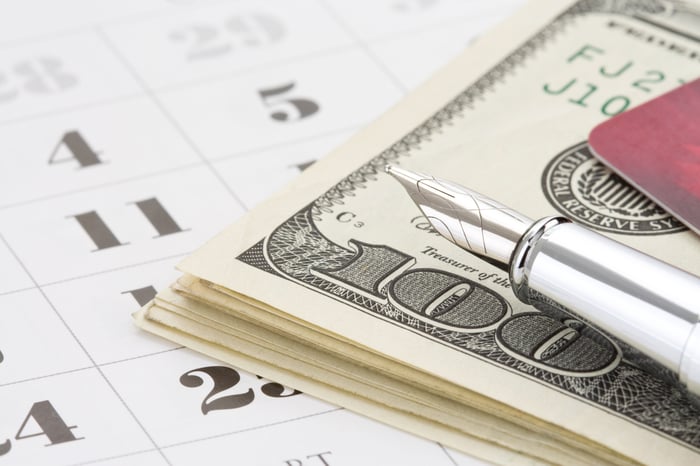Some of the best dividend stocks tend to fly under the radar for many investors. That's a shame, really. So we asked a handful of your fellow investors here at The Motley Fool to share some top-notch income stock tips that don't get a whole lot of publicity.
Read on to see how our panelists came up with theme-parks operator Cedar Fair (FUN -0.47%), regional bank BB&T (TFC 0.14%), and movie-theater chain AMC Entertainment Holdings (AMC -2.01%).

Image source: Getty Images.
Fade to black? Not so fast
Keith Noonan (AMC Holdings): After the film industry suffered the worst summer box-office season since 2006, the notion of investing in a movie-theater chain is bound to raise some eyebrows. But steep discounting for AMC Holdings and a big yield make it a stock that risk-tolerant investors might want to look into. The theater chain's stock has fallen roughly 58% year to date, driving the company's dividend yield up to 5.6%. To borrow one of Warren Buffett's most famous adages, I think there's an opportunity to be greedy amid the fearful outlook many investors now have on the stock.
The rise of streaming video content has been put forth as one of the biggest factors for the year's lousy box-office performance, which is down roughly 6% year to date from the same stretch last year. While direct-to-home distribution remains a credible long-term threat to AMC and other chains, I think it's unlikely that growth for services such as Netflix and Amazon Prime Video caused the theater business's drop-off this year.
With 2016's record ticket sales in mind, I think it's more likely that this year's disappointing performance is something of an outlier -- one in which big movie franchises including Transformers, Cars, and Planet of the Apes lost appeal with audiences and would-be franchise-launchers such as King Arthur and The Mummy landed as duds for a variety of reasons. And while it's easy to fixate on the recently concluded and shockingly disappointing summer movie season, sales this year trail 2015's by less than 1% across the same stretch and are up 4.3% over the same period in 2014.
AMC Holdings isn't a stock you should turn to for reliable dividend growth -- it has kept its payment steady since 2014 -- but the big sell-offs and big yield point to opportunity.

Image source: Getty Images.
This FUN ticker pays serious dividends
Anders Bylund (Cedar Fair): When the ticker screams FUN, it can be hard to treat that stock as a serious investment. But Cedar Fair is no Mickey Mouse stock.
The theme-park operator has increased its annual sales by 20% over the past five years. At the same time, dividend payments per share more than doubled. Thanks to that shareholder-friendly trend, Cedar Fair's dividend yield now stands at a generous 5.3% in spite of steady share-price gains.
Past performance is no guarantee of future gains, of course. On that note, Cedar Fair seems poised to continue its market-beating ways for the foreseeable future.
All-year theme-park managers such as SeaWorld depend on the fickle wallet-opening attention of long-distance tourists. By contrast, Cedar Fair makes most of its hay in the summertime from locals around its 11 parks in places with highly seasonal weather variations such as Ohio, Minnesota, and Ontario. That could be a dangerous strategy, but it works well thanks to Cedar Fair's combination of high-quality attractions and deeply discounted season passes for those committed locals.
So the company relies on a large legion of repeat customers. Admission fees are essentially enough to cover Cedar Fair's operating expenses, and most of its operating income springs from sales of merchandise, food, and other add-in revenue streams.
It's a remarkably effective strategy, generating some of the strongest profit margins in the theme-park industry. Since Cedar Fair is structured as a master limited partnership rather than as a regular corporation, the company must pass these cash profits on to its unitholders in the form of dividend-like cash distributions.
Put it all together, and you get a study business model with plenty of cash distribution muscle. Cedar Fair's great dividend yield is here to stay.

Image source: Getty Images.
A high yield that can grow over time
Jordan Wathen (BB&T Corporation): This Winston-Salem, N.C.-based bank offers an attractive dividend yield of 3% that should only grow over time, thanks to a conservative culture and an attractive geographic footprint. The bank's branches span much across the American southeast, with deposits most concentrated in growing markets that include North Carolina, Virginia, and Florida.
I see BB&T's conservative underwriting culture as its greatest attribute. In the most recent quarter, net charge-offs tallied to just 0.37% of average loans on an annualized basis, helping the bank earn a 15.6% annualized return on tangible common equity. Both metrics rank among the best of its peers.
But neither low loan losses nor high returns are anything new. The bank was quick to take its losses during the financial crisis, when, in 2010, net charge-offs peaked at 2.6% of average loans. That same year, the bank earned net interest margin in excess of 4%, and the bank remained profitable throughout the downturn.
BB&T isn't likely to grow deposits a rate much faster than inflation over the long haul, but I'd argue slow growth is more of an asset than a liability. Banks that grow quickly often do so by loosening underwriting standards, paying too much for deposits, and taking on excess risk. BB&T has never been that kind of bank, and the fact it returns so much capital to shareholders as a dividend stands as evidence that it puts capital returns ahead of unprofitable growth.
In short, BB&T offers an attractive 3% yield on a current basis and the prospect for respectable single-digit dividend growth over the long haul. That's about as good as it gets for any bank stock.
